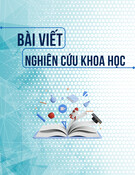Nguyen Thi Bich Giang / Tạp chí Khoa học và Công nghệ Đại học Duy Tân 05(66) (2024) 159-173
159
DTU Journal of Science and Technology
05(66) (2024) 159-173
An analysis of persuasive strategies utilized in Taylor Swift’s commencement speech Phân tích các chiến lược thuyết phục trong bài diễn văn tốt nghiệp của Taylor Swift Nguyen Thi Bich Giang* Nguyễn Thị Bích Giang* Faculty of English, School of Languages, Humanities and Social Sciences, Duy Tan University, Da Nang, 550000, Vietnam Khoa Tiếng Anh, Trường Ngôn ngữ - Xã hội Nhân văn, Trường Ðại học Duy Tân, Ðà Nẵng, Việt Nam (Date of receiving article: 18/05/2024, date of completion of review: 17/06/2024, date of acceptance for posting: 05/07/2024)
Abstract
This article investigates the persuasive strategies employed by Taylor Swift in her captivating commencement speech delivered on May 18, 2022, upon receiving an honorary doctorate of fine arts from New York University. By using descriptive, qualitative and quantitative methods, Swift’s discourse of the address was analysed in the light of Aristotle's rhetorical theory [3], encompassing Ethos, Pathos, and Logos. The findings underscore Taylor Swift's masterful utilization of the three pillars of Aristotelian rhetoric: Pathos resonated powerfully, employed 43.1% (22 instances), followed by Ethos at 35.3% (18 instances), and Logos at 21.6% (11 instances). She adeptly incorporated Aristotle's timeless theory into her commencement address, deftly weaving a tapestry of engagement, persuasion, encouragement, motivation, and trust-building with her audience. By employing the power of Ethos, Pathos, and Logos, speakers can inspire change, instill hope, and leave an indelible mark on the hearts and minds of their audience, especially in the pivotal moments of commencement speeches aimed at igniting the spirits of fresh graduates.
Keywords: commencement speech; persuasive strategies; Ethos; Pathos; Logos.
Tóm tắt
Bài báo này nghiên cứu các chiến lược thuyết phục Taylor Swift sử dụng trong bài phát biểu đầy hấp dẫn tại buổi lễ tốt nghiệp vào ngày 18 tháng 5 năm 2022 khi cô nhận bằng Tiến sĩ danh dự về nghệ thuật tại Đại học New York. Bằng cách sử dụng phương pháp mô tả, định tính và định lượng, tác giả đã phân tích bài diễn thuyết của Swift dưới góc nhìn của thuật Hùng biện (Aristotle) qua ba trụ cột Ethos, Pathos và Logos. Kết quả nghiên cứu sẽ cho thấy sự tài tình của Taylor Swift trong việc sử dụng ba trụ cột của nghệ thuật thuyết phục của Aristotle, trong đó Pathos được ca sĩ này sử dụng nhiều nhất - với 22 trường hợp (43,1%), tiếp theo là Ethos - 18 trường hợp (35,3%) và cuối cùng là Logos - 11 trường hợp (21,6%). Cô đã tinh tế, khéo léo kết hợp một lý thuyết “vượt thời gian” của Aristotle vào bài diễn văn tốt nghiệp của mình tạo ra một bài diễn thuyết sinh động, đầy sự cuốn hút, mê hoặc, đã chinh phục và tạo dựng được niềm tin từ khán thính giả. Qua “trường hợp” Taylor Swift, bài báo cũng nêu lên một vài kinh nghiệm về chiến lược thuyết phục để các diễn giả có thể vận dụng vào những bài nói chuyện, những diễn từ trong lễ tốt nghiệp của mình, nhằm truyền cảm hứng, thu hút và để lại dấu ấn khó phai mờ trong tâm trí người nghe.
Từ khóa: bài diễn văn tốt nghiệp; chiến lược thuyết phục; Ethos; Pathos; Logos.
*Corresponding author: Nguyen Thi Bich Giang Email: bich_giang20@yahoo.com
Nguyen Thi Bich Giang / Tạp chí Khoa học và Công nghệ Đại học Duy Tân 05(66) (2024) 159-173
160
1. Introduction 1.1. Research objectives
This study focuses on achieving the following
objectives:
- To identify the persuasive strategies utilized
in Taylor Swift's commencement speech.
- To determine the frequencies of persuasive tactics employed in Taylor Swift's commencement address.
- To describe the implementation of persuasive
strategies in Taylor Swift's graduation address.
1.2. Research questions
The study aims to answer the following questions:
- What types of persuasive strategies are employed in Taylor Swift's commencement speech?
- What are the frequencies of the persuasive strategies used in Taylor Swift's graduation speech?
- How are the persuasive
strategies manifested in Taylor Swift's graduation address?
1.3. Research significance
Taylor Alison Swift has been known as an outstanding American pop and country music singer-songwriter whose tales of young heartache achieved widespread success in the early 21st century. Amazingly, she has added more achievements to her already impressive career records. She was awarded an honorary Doctorate of Fine Arts for being a “trailblazing and influential advocate for artists' rights” and “one of the most prolific and celebrated artists of her generation” by New York University (NYU) at the commencement ceremony for the Class of 2022 on May 18. On the special occasion of receiving this prestigious doctoral degree, she delivered a 20-minute first-ever humorous, inspirational, and heartwarming commencement speech at Yankee Stadium. Through her address, she offered words of encouragement and motivation to the fresh graduates as they embark upon the next journey of their lives, while also acknowledging the unconditional support their loved ones may have offered along the way.
The result of this study is expected to explore the theory of persuasive strategies used, especially in the context of a commencement speech. Practically, this study also aims to provide deeper insights into persuasive strategies and their roles in linguistics. Additionally, it is intended to serve as a reference for future researchers studying persuasive strategies. includes [3], which 2. Literature review
2.1. Theoretical background
2.1.1. Persuasion
Persuasion is defined as the art of persuading people to change their minds, adopt your points of view and relate to your arguments by Gordon [9]. Additionally, Simon, as cited in Daiton and Zelley [6], characterizes persuasion as “human communication aimed at influencing others to modify their beliefs, values, or attitudes” [6, p.133].
The study focuses on analyzing Taylor Swift's exceptional graduation address to discover the persuasive strategies she employed. This research is based on Aristotelian rhetoric theory three classic Aristotelian rhetorical concepts used to convince audiences: Ethos, Pathos, and Logos. Rhetoric is perceived as the art of applying language for persuasive effects (Murthy & Ghosal) [13]. It is a productive tool for providing information, persuading, and motivating the audience for specific purposes in particular situations. The idea of classical rhetoric or modes of persuasion was developed by Aristotle [2]. This theory of rhetoric primarily discusses how people try to persuade, inspire, change, and motivate others through ideas, values, thoughts, and messages in the context of communication. Mastering the art of rhetoric and employing persuasive strategies are the keys to achieving
Nguyen Thi Bich Giang / Tạp chí Khoa học và Công nghệ Đại học Duy Tân 05(66) (2024) 159-173
161
and
successful persuasion. This segment offers valuable insights into the theory of rhetoric as a whole, with a particular focus on Aristotle's groundbreaking work on persuasive strategies [3].
2.1.2. Persuasive Strategies
as an indispensable
information, serving as additional credible evidence substantiation. Aristotle underscored two potent forms of logical proofs: enthymeme and example. These persuasive tools wield considerable influence, bolstering the credibility and persuasiveness of the argument. Aristotle's profound exploration delves into the persuasive power of two essential forms of logos: Enthymeme (an incomplete version of a formal deductive syllogism) and Example (inductive reasoning-drawing a conclusion from tools not only specific examples). These captivate minds but also ignite conviction, making them indispensable for anyone aiming to sway opinions and inspire action.
2.1.2.3. Pathos
Unlocking the potential of rhetoric reveals its prowess analytical instrument, offering a roadmap for sculpting compelling persuasion (Eyman) [7]. Aristotle meticulously distilled and amalgamated the initial complexities inherent in the rhetorical approach, furnishing a streamlined pathway towards achieving persuasive mastery [3]. Amidst a myriad of persuasion theories, the researcher decisively embraced Aristotle’s theory [3], a cornerstone that meticulously addresses the three foundational pillars crucial to persuasive discourse including Ethos, Logos, Pathos - three forms of rhetorical proof.
2.1.2.1. Ethos
Pathos delves into the realm of audience emotions, wielding persuasive power by evoking sadness, feelings of happiness, satisfaction, pity, or fear (Aho) [1]. Achieving Pathos hinges on whether speakers can convey a deep understanding and connection with the audience's needs, values, and desires. Aristotle outlined a spectrum of contrasting emotions and elucidated the conditions under which each sentiment arises (Griffin) [11]. By skillfully navigating these emotional landscapes, speakers can forge powerful connections with their audience, fostering deep engagement with their message.
2.2. Previous related studies
Numerous studies have explored
The speaker's Ethos emanates powerfully through their portrayal of self. Ethos commands the spotlight, urging the audience to grant authority to the speaker's voice (Green) [10], while also emphasizing the compelling nature of the speaker's character (Aho) [1] & (Conrad & Malphurs) [4]. Within the realm of rhetoric, Ethos is dissected into three distinct facets that underscore the speaker's undeniable credibility: Virtuous Character (the speaker's portrayal as a reliable individual driven by genuine motives and intentions, fostering trust among their audience (Verderber, Sellnow & Verderber) [16, p.11], Goodwill (a favorable assessment of the speaker's intentions towards the audience), and Perceived Intelligence (The speaker's perceived intellect) (Griffin) [11].
2.1.2.2. Logos
the persuasive methods utilized in commencement addresses. Hamurenge [12] examined how Aristotelian persuasion techniques were applied in speeches by Professor Lazarus Hangula, the former Vice-Chancellor of the University of Namibia. Drawing from Aristotle's Theory of Rhetoric, which encompasses Ethos, Pathos, and Logos, Hamurenge's study dissected how emotions, authority, and logic contribute to Furthermore, effective delivery. speech Logos embodies the backbone of any argument, rooted in reasoning and logic (Aho) [1] & (Green) [10]. It thrives on the presentation of
Nguyen Thi Bich Giang / Tạp chí Khoa học và Công nghệ Đại học Duy Tân 05(66) (2024) 159-173
162
the analysis of transcript, the
commencement speech. To collect the data, several steps were taken. Firstly, the video of her graduation speech was downloaded. Secondly, the video was watched and the transcript was conducted. Thirdly, the data were read multiple times to gain a thorough understanding and identify the segments that potentially contained persuasive strategies used in the speech. Finally, the during instances in the speech containing persuasive strategies were classified.
3.5. Data analysis
Darminto [6] identified rhetorical strategies employed by Oprah Winfrey during her commencement address at the University of Southern California in 2018. González and Cristina [8] scrutinized Steve Jobs' speech at Stanford, focusing on the amalgamation of traditional rhetoric with linguistic devices to captivate the audience. Finally, Partch and Kinnier [14] conducted content analysis on 90 American university commencement speeches to uncover underlying values and societal messages. Despite the wealth of research on commencement speeches and persuasion, there has been no study on persuasive strategies in Taylor Swift’s graduation address.
3. Methodology To clearly indicate the specific genres to which the persuasive strategies belong, qualitative techniques are used to analyze the data. The data were analyzed in the following steps: 3.1. Research design
- The rhetorical proofs found in the utterances in the speech transcriptions are identified and classified.
- Then the data are organized by coding them
according to rhetorical proofs.
- After that, the data are displayed by using
codes and tables.
- Taylor Swift’ utterances are analyzed, interpreted, and discussed by using Rhetoric Aristotle [3]. Descriptive, qualitative, and quantitative methods are utilized to analyze Taylor Swift's commencement speech from May 18, 2022. The descriptive and qualitative methods aim to vividly depict and thoroughly explain Swift's rhetoric. Additionally, quantitative method is employed to measure the frequency and patterns of persuasive strategies within the speech. This analysis is grounded in the timeless principles of Aristotle's Rhetorical Theory.
- Finally, the conclusions are drawn based on 3.2. Research subject the findings and discussions of the data.
4. Findings and discussions
The data in this research consist of Taylor Swift's passionate and sincere commencement address delivered at the 2022 New York University graduation ceremony held at Yankee Stadium on May 18, 2022, in New York City. in Taylor employed
3.3. Data sources
The data for this research include a video on YouTube [17]. Additionally, the transcript of the video, serving as the data source, is obtained from the website [15].
3.4. Data collection
The data for this study are derived from the in Taylor Swift's utterances or words Based on Aristotle's theoretical framework [3], this analysis investigates the persuasive Swift's tactics commencement speech by examining three fundamental rhetorical pillars: Ethos, Logos, and Pathos. Using a combination of descriptive, qualitative, and quantitative methods, this study aims to thoroughly analyze the use of these rhetorical strategies. The findings are presented and discussed to illustrate the effectiveness of her speech in engaging with the graduates during the commencement ceremony.
Nguyen Thi Bich Giang / Tạp chí Khoa học và Công nghệ Đại học Duy Tân 05(66) (2024) 159-173
163
4.1. Pathos
influence constantly evolving nature of human identity to urge us to recognize ourselves as multifaceted individuals capable of ongoing development and adaptability. She confidently presents her perspective with flair, navigating complex ideas with poise and assurance.
4.1.2. Pride
the With immense pride,
five subcategories remarkable challenges overcome by the NYU graduates are recognized by Taylor Swift, who commends them for their resilience and achievements, as shown in the following heartfelt expression.
Example 2: Pathos [3] involves the use of emotional appeals to persuade individuals to take action. Aristotle also recognizes the power of emotion the audience's to judgment and importance of utilizing the emphasizes emotional appeals as a means of captivating and enchanting the audience. To effectively persuade the audience, the speaker must connect with their emotions and evoke the appropriate response. Pathos was analysed emotional including to according Confidence, Pride, Admiration, Happiness and Friendliness.
4.1.1. Confidence
to embrace
Demonstrating a sense of unwavering confidence, Taylor Swift encourages the their multifaceted graduates identities, as demonstrated in the impressive statement as follows.
Example 1:
“We are all literary chameleons and I think it’s fascinating. It’s just a continuation of the idea that we are so many things, all the time” (Datum 30/Path/ C).
“But I really can’t complain about not having a normal college experience to you because you went to NYU during a global pandemic, being essentially locked into your dorms or having to do classes over Zoom. Everyone in college during normal times stresses about test scores, but on top of that you also had to pass, like, a thousand COVID tests. I imagine the idea of a normal college experience was all you wanted too. But in this case, you and I both learned that you don’t always get all the things in the bag that you selected from the menu in the delivery service that is life. You get what you get. And as I would like to say to you, you should be very proud of what you’ve done with it. Today you leave New York University and then you go out into the world searching for what’s next. And so will I” (Datum 13/Path/ P).
thousand COVID
their
resilience tests alongside
Taylor Swift’s assertive statement “We are all literary chameleons” highlights her strong belief in this idea. By comparing people to “literary chameleons”, she uses a striking metaphor to emphasize human adaptability and versatility, showcasing her creativity and language skills. Her use of inclusive pronouns like “we” and “all” implies that this trait is universal to reinforce her conviction that it applies to everyone. Her thoughtful discussion of the concept shows her confidence and ability to analyze abstract ideas. Additionally, her logical progression of thoughts, ending with the idea that our multifaceted nature is a natural part of being “literary chameleons” demonstrates her ability ideas to connect and build upon cohesively. She is highlighting the varied and In the above example, Taylor Swift shows the difficulties NYU’s students faced during the pandemic to describe confinement and virtual learning with phrases like “locked into your dorms” and “classes over Zoom”. Her words, such as “pass a tests” highlight the students' remarkable strength and these challenges, she adaptability. Despite in managing emphasizes numerous COVID their academic work. By using phrases like “you and
Nguyen Thi Bich Giang / Tạp chí Khoa học và Công nghệ Đại học Duy Tân 05(66) (2024) 159-173
164
daughter fights with each other during boarding so no one would want the empty seat between us on Southwest” (Datum 11/Path/ A).
Swift
resilience their
the graduates to urge find humor to
I both learned” and “delivery service that is life”, she creates a strong sense of empathy and connection. She concludes by encouraging students to gain their achievements despite the difficulties and urging them to take pride in their inspiring determination. Her journey and empowering statements, like “you should be very proud” and “searching for what's next” serve as a beacon of encouragement to spark determination in her listeners. By expressing her empathy, Swift acknowledges the difficult and the graduates faced unusual circumstances during the pandemic. It can be inferred that she can understand and share their challenges. in Through highlighting navigating these obstacles, she underscores their strength and perseverance. She also encourages the graduates to be proud of their achievements, despite the unprecedented hurdles. She relates her own experiences to theirs to create a sense of shared journey and solidarity. What’s more, she emphasizes the importance of adapting to life's unpredictability to continue being flexible and resilient as they move forward into the future.
4.1.3. Admiration
candidly
reflects on her unconventional educational journey and contrasts it with the traditional college experience. By sharing her own story, she implicitly acknowledges the challenges she faced and the sacrifices she made in pursuit of her dreams. Despite not having the opportunity for a “normal” college experience, she does not lament or dwell on what she missed out on. Instead, she humorously describes her unique circumstances to highlight the makeshift nature of her education while on the road pursuing her music career. Through her candid narrative, she demonstrates admiration for the typical college experience that many students enjoy. She does not dismiss or diminish its value; rather, she presents it as a contrast to her own path. Her use of humor, such as the anecdote about pretending to have fights with her mom to deter fellow passengers, shows her resilience and ability in challenging situations. This example reveals her admiration for the traditional college experience while also celebrating the unconventional path she has taken. It showcases her ability to engage in her own journey with humor and resilience while acknowledging the value of different educational experiences.
4.1.4. Happiness
Overflowing with unbridled Speaking with profound admiration, Taylor on Swift own reflects her unconventional educational journey, which starkly contrasts with the “normal college experience” many of the NYU’s graduates had the privilege of pursuing, as she eloquently expresses in the following statement.
Example 3:
joy, Swift expresses her sheer delight at being present to celebrate the graduation of the New York University class of 2022, as she eloquently states as follows.
Example 4:
“And let me just say, I am elated to be here with you today as we celebrate and graduate New York University’s class of 2022” (Datum 5/Path/ Ha). “I never got to have the normal college experience, per se. I went to public high school until 10th grade and finished my education doing homeschool work on the floors of airport terminals. Then I went out on the road on a radio tour, which sounds incredibly glamorous but in reality it consisted of a rental car, motels, and my mom and I pretending to have loud mother-
Nguyen Thi Bich Giang / Tạp chí Khoa học và Công nghệ Đại học Duy Tân 05(66) (2024) 159-173
165
Therefore, journey. next important moment with this
In this captivating moment, Swift's speech shows happiness and excitement as she takes the stage at NYU's graduation ceremony. Using words like “elated” she conveys a deep sense of joy and enthusiasm to highlight her genuine delight in being part of this significant event. Her tone is filled with jubilation and positivity to match the collective excitement as she celebrates the graduates' achievements. The phrase “celebrate and graduate” emphasizes the joy and triumph of the occasion. Through her words, she vividly describes the festive atmosphere of graduation day, where students and their loved ones come together to celebrate years of hard work and perseverance. She is acknowledging the significance of the occasion and her honor in sharing the graduates. This moment shows that she not only expresses her own happiness but also inspires a sense of boundless excitement.
4.1.5. Friendliness
her audience to foster a strong sense of camaraderie. By treating her listeners equally and emphasizing shared experiences, she ensures that everyone feels valued and included. Moreover, her incorporation of casual, everyday language, like when she suggests, “let's just keep dancing like we're... the class of 22” adds to the inviting ambiance. She encourages unity and celebration among the graduates by highlighting their shared experience as the class of 2022. She emphasizes togetherness to urge them to enjoy their achievements the moment and gain collectively. By calling for continued dancing, she metaphorically suggests maintaining the celebratory spirit. It's a message of solidarity and motivation for the graduates as they commence their her communication style in this scenario radiates friendliness and warmth. Through her inclusive language and casual demeanor, she creates an environment where everyone feels like they belong. It is apparent that she stimulates a profound sense of connection and unity among all involved.
4.1.6. Frequency of subcategories of Pathos
In a friendly and welcoming manner, Taylor Swift unites her audience with a sense of camaraderie to urge them to keep celebrating their achievements together. Her inclusive tone shines through in the following example.
Example 5:
“We’re doing this together. So let’s just keep dancing like we’re…the class of 22” (Datum 50/Path/ F).
table presents
Taylor Swift's speech uses Pathos effectively, with 22 instances of strong emotions like Confidence, Pride, Admiration, Happiness, and Friendliness. By skillfully using these emotions, she creates a powerful connection with her audience to make them feel deeply involved. the detailed The following the Ethos frequencies and percentages of subcategories in this speech.
In this instance, Taylor Swift easily embodies warmth and inclusivity through her choice of words and tone. Through the clever use of “we” and “let's”, she seamlessly unites herself with
Nguyen Thi Bich Giang / Tạp chí Khoa học và Công nghệ Đại học Duy Tân 05(66) (2024) 159-173
166
Table 4.1. The frequency of subcategories of Pathos in Taylor Swift’s speech
Subcategories of Pathos Frequency Percentage 40.9 % 1. Confidence 22.72 % 2. Pride 13.64% 3. Admiration 13.64% 4. Happiness 9.1 % 5. Friendliness 100 % Total 9 5 3 3 2 22
learning during the COVID-19 pandemic, she empathizes with the audience and elevates their pride by sharing similar experiences and honoring their dedication and sacrifices. Her second most frequent use of Pride acknowledges the graduates' hard work and achievements to foster a sense of accomplishment and validation, and motivate them as they pursue their goals.
In addition, expressions of Admiration and Happiness occur with the same frequency in Swift's speech, each accounting for 13.64% of her emotional appeals to make them her third most frequent use of Pathos. Admiration emphasizes her respect and appreciation for the graduates and their journey to foster mutual respect.
to
Table 4.1 explores the emotional dimensions of Taylor Swift's speech, highlighting the strong influence of Pathos. The data reveal various emotional subcategories in her message, with Confidence being the main focus, accounting for 40.9% of her influence. Her speech is filled with strong self-assurance, aimed at motivating the audience to recognize their own potential. She instills confidence by conveying that everyone has the capacity to be a writer. With unwavering conviction, she encourages the audience to reflect on their values and trust in their abilities. She also emphasizes the importance of accepting imperfections to urge listeners to confront mistakes directly and view them as opportunities for growth. Her powerful speech aims to inspire the audience to face their fears, embrace their vulnerabilities, and embark upon a journey of self-discovery and improvement. She utilizes Confidence most frequently in her address to inspire and empower the graduates, establish her credibility, provide reassurance during their daunting transition, foster a confident mindset, and serve as a positive role model. Her confident tone creates an uplifting and motivating atmosphere to ensure her message resonates strongly with the audience.
To convey Admiration, she strategically shares anecdotes and messages that evoke profound feelings of reverence and wonder among her audience. By recounting her own experiences and successes, she becomes a figure the graduates. inspire of admiration Highlighting her struggles, triumphs, and cherished values, she encourages her audience to reflect on their own aspirations and potential impact in the world. The admiration for Swift and her achievements not only captures attention during the speech but also sparks transformative action among the graduates to motivate them to pursue their dreams with determination and resilience.
In expressing Happiness three times, Swift aims to uplift the mood, create a positive Besides, Pride which closely follows at 22.72% reflects the feelings of achievement and self-worth that Swift instills in her audience. Throughout the event, she ignites a profound sense of pride among those who supported the new graduates to acknowledge and value their steadfast support. By recalling the challenges of
Nguyen Thi Bich Giang / Tạp chí Khoa học và Công nghệ Đại học Duy Tân 05(66) (2024) 159-173
167
the
them embracing
belief and potential. By instilling confidence, Swift aims to inspire and motivate the graduates, their towards guiding capabilities and venturing into their futures with assurance. On the other hand, Friendliness is used the least often as it may not be as central to the overall message compared to other emotions. Her ability to infuse positivity and camaraderie into her discourse leaves an indelible mark, nurturing an environment where optimism flourished and bonds are strengthened.
4.2. Ethos sense of atmosphere, and enhance achievement and excitement among the graduates and their families. These expressions underscore her genuine enthusiasm and happiness about the event and its significance. By repeatedly conveying her delight, Swift emotionally engages her audience to infuse her speech with a source of positive energy. This joyful emotion highlights the importance of the occasion and her appreciation for being part of it to reinforce the message of celebration and accomplishment throughout her speech and resonate with the audience.
Ethos was carefully examined through three main qualities: Virtuous Character, Goodwill, Intelligence. This detailed and Perceived analysis shows how Taylor embodies these qualities, boosting her credibility and persuasive impact.
4.2.1. Virtuous Character
its
Demonstrating a profound sense of virtue and heartfelt gratitude, Taylor Swift modestly acknowledges the tremendous sacrifices made by her family, without whom she would not be standing before the NYU’s graduates. Her virtuous character is evident in the following example.
Finally, Swift demonstrates Friendliness the least with two instances (9.1%), reflecting her effort to create a welcoming atmosphere and connect with her audience from the beginning of her address. She incorporates friendliness to establish a welcoming and approachable tone to foster connection with the audience and making lowest them feel comfortable. Despite frequency, Friendliness enhances the overall warmth of the speech to encourage audience engagement and make the experience relatable and enjoyable. While Friendliness still plays a role in enhancing the speech's warmth and approachability, it may not be as central to her overall message compared to other emotions. Example 6:
tactics—Confidence,
“I know that words are supposed to be my ‘thing’ but I will never be able to find the words to thank my mom and my dad, and my brother, Austin, for the sacrifices they made every day so that I could go from singing in coffeehouses to standing up here with you all today because no words would ever be enough” (Datum 7/Eth/ C).
for her
In a word, in this address, Taylor Swift masterfully wields a myriad of Pathos persuasive Pride, Admiration, Happiness, and Friendliness—to captivate, inspire, and empower her audience, especially the recent graduates. Each strategy is meticulously crafted to instill a profound sense of pride in their achievements, bolster their confidence as they venture into their futures, and cultivate an atmosphere brimming with warmth and encouragement throughout the ceremony. Confidence is used the most frequently because it serves as a foundational emotion to empower the audience and reinforce her message of self- Taylor Swift’s deliberate choice of phrases, such as “thank my mom and my dad” and “for the sacrifices they made every day”, powerfully conveys her deep-seated gratitude and profound family. By openly appreciation acknowledging her struggle to adequately express her gratitude, she embodies traits
Nguyen Thi Bich Giang / Tạp chí Khoa học và Công nghệ Đại học Duy Tân 05(66) (2024) 159-173
168
here today who have made this day possible” (Datum 2/Eth/ G).
community university
Swift reflects her goodwill through her expression of gratitude towards various individuals involved in the event. By beginning with “I’d like to say a huge thank-you”, she sets a tone of sincere appreciation to indicate her genuine acknowledgment of the efforts made by those mentioned. Specifically naming NYU's chairman of the board of trustees, Bill Berkeley, along with all the trustees and members of the board, demonstrates her recognition of their leadership and contributions. Mentioning NYU's president, Andrew Hamilton, and provost further highlights her Katherine Fleming appreciation for the university's administration. Additionally, she extends her gratitude to the by broader acknowledging the presence of the faculty and alumni at the event to emphasize their collective role in making the day possible. Her statement recognizes the collective effort of various individuals in making the ceremony possible and reflects her appreciation for their roles in celebrating the graduating class.
4.2.3. Perceived intelligence
synonymous with virtuous character to further enhance her appeal. In addition, by tenderly mentioning her parents and brother by their names, she expresses her gratitude with a deeply personal touch to reinforce the genuine bond she shares with them. This personalized approach not only adds authenticity to her expression but also showcases her sincerity and unwavering affection. Moreover, her candid admission, “words are supposed to be my ‘thing’ but I will never be able to find the words” shows her humility and modesty to endear her to the audience with her genuine sincerity. Besides, her use of inclusive language, like “you all today” fosters a sense of camaraderie to actively involve the audience in her journey and elicit positive sentiments towards her. Through this heartfelt expression of gratitude, she epitomizes Virtuous Character to embody humility, sincerity, a profound appreciation for her family's sacrifices and recognition of the contributions of others to her success. It can be deduced that this statement, therefore, leave a lasting impression on her audience. This skillful portrayal of virtuous character not only seeks to evoke a favorable response from the audience but also fosters a profound connection between the speaker and her listeners.
4.2.2. Goodwill
Taylor Swift showcases her perceived intelligence by reflecting on her dynamic creative journey and genre versatility as a songwriter to illustrate her depth of musical understanding and adaptability, as shown in her insightful reflection as follows.
Example 8:
Conveying a genuine spirit of goodwill, Taylor Swift extends sincere thanks and appreciation to the NYU leadership, faculty, and this graduation alumni who have made ceremony possible, as she graciously states in the following example.
Example 7:
“As a songwriter I’ve never been able to sit still, or stay in one creative place for too long. I’ve made and released 11 albums and, in the process, I’ve switched genres from country to pop to alternative to folk. This might sound like a very songwriter-centric line of discussion” (Datum 28/Eth/ I). “I’d like to say a huge thank-you to NYU‘s chairman of the board of trustees, Bill Berkeley, and all the trustees and members of the board, NYU’s president Andrew Hamilton, provost Katherine Fleming, and the faculty and alumni
Nguyen Thi Bich Giang / Tạp chí Khoa học và Công nghệ Đại học Duy Tân 05(66) (2024) 159-173
169
self-awareness
industry. This implies an understanding of her own creative process and the need for continuous growth, which can be perceived as a form of intelligence. This can influence the audience's perception of her intelligence and expertise. Additionally, the tone of humility and relatability helps form a positive impression and encourage the audience to view her as an intelligent and talented individual in her field.
4.2.4. Frequency of subcategories of Ethos
intelligence
Ethos is the second most significant element in Taylor Swift's commencement speech. She employs Ethos 18 times, addressing key such as Virtuous character, components Goodwill, and Perceived intelligence. The detailed instances are presented in the following table. Taylor Swift mentions her achievements as a songwriter, stating that she has “made and released 11 albums”. By highlighting her productivity and creativity, she implies a level of intelligence and skill in her craft. The statement “switched genres from country to pop to alternative to folk” showcases her adaptability and willingness to explore diverse artistic styles. This variety suggests a level of intelligence in understanding and mastering different musical genres. She acknowledges her restlessness by stating that they have “never been able to sit still or stay in one creative place for too long”. Her reflection on her musical journey reveals her through her artistic perceived versatility, creative adaptability, depth of experience, and strategic communication skills, contributing to her reputation as a highly intelligent and accomplished artist in the music
Table 4.2. The frequency of subcategories of Ethos in Taylor Swift’s speech
Subcategories of Ethos 1. Virtuous character 2. Goodwill 3. Perceived intelligence Total Frequency 7 6 5 18 Percentage 38.9 % 33.3 % 27.8% 100 %
experiences that have shaped her journey. This the significance of approach underscores community and personal growth in attaining success to inspire her listeners to acknowledge their own paths and the individuals who have supported them along the way.
It can be seen that table 4.2 highlights Taylor Swift's deliberate emphasis on her Virtuous character throughout her speech, which appears 7 times (38.9%) and serves as the cornerstone for establishing credibility and moral resonance with her audience. By analyzing these instances, a spectrum of personality traits—gratitude, humility, self-awareness, honesty, appreciation, enthusiasm, realism, and a reflective, positive outlook—is uncovered to highlight Taylor Swift's authenticity and relatability. Through this emphasis, she seeks to bolster her credibility and foster a deeper connection with her audience, portraying herself as a genuine individual who prioritizes integrity. She positions herself as someone who values support and integrity
thanks, recognize the to Furthermore, Goodwill emerges as the second dominant Ethos in Taylor Swift's speech, appearing 6 times (33.3%). Through expressions of gratitude and appreciation, she endears herself to the audience. Hence, it can be recognized that there are various individuals involved in the graduation ceremony, such as the board of trustees, NYU's president, provost, faculty, and alumni. By acknowledging their contributions and extending she demonstrates her goodwill and respect towards
Nguyen Thi Bich Giang / Tạp chí Khoa học và Công nghệ Đại học Duy Tân 05(66) (2024) 159-173
170
pressure for perfect female role models was prevalent, as demonstrated in the following example.
Example 9:
them. What’s more, she shares life lessons, further strengthening her connection with the audience and emphasizing her genuine intent to impart wisdom and support. This consistent display of goodwill not only bolsters Taylor's Ethos but also fosters a sense of camaraderie and mutual respect among all participants in the ceremony.
“See, I was a teenager in the public eye at a time when our society was absolutely obsessed with the idea of having perfect young female role models. It felt like every interview I did included slight barbs by the interviewer about me one day ‘running off the rails’” (Datum 35/Los/ EN).
in her words,
of Perceived
'22', resonating with her highlight to
While Taylor Swift's credibility, intelligence, and competence as a renowned singer and songwriter undoubtedly influence how people the perceive and believe subcategory Intelligence accounting for 27.8% (5 times) is the least utilized. She adeptly establishes her credibility and familiarity by referencing her highly successful song the educational audience background and extensive knowledge, and share personal experiences. By incorporating these elements into her speech, she reinforces her reputation as a credible and intelligent individual to enhance the audience's trust in her message and amplify the impact of her words.
Swift skillfully uses an Enthymeme to highlight the tough challenges she faced as a teenager in the public eye. By saying “See, I was a teenager in the public eye at a time when our society was absolutely obsessed with the idea of having perfect young female role models”, she leads her audience to understand that being famous during such a time is naturally difficult. This approach makes people sympathize with her struggles, especially when she mentions subtle criticisms interviewers about from possibly “running off the rails”. Through this rhetorical method, she not only shares her own story but also encourages people to think about society's expectations to create a stronger bond and understanding with her audience.
4.3.2. Example
In summary, Virtuous character is used the most because it helps Swift establish a deep emotional connection and credibility with her audience, while Perceived Intelligence is used the least because it may not resonate as deeply on an emotional level and could potentially create a barrier between Swift and her audience.
4.3. Logos
An illustrative anecdote from Taylor Swift's life offers insight into her personal experiences, as she recounts a phase in 2012 where she adopted the style of a 1950s housewife to emphasize the enjoyment she derived from exploring trends and phases, as highlighted in the following example.
Example 10:
The study of Logos involves a focused examination of both Enthymeme and Example components. This analysis offers valuable insights into the persuasive logic and illustrative evidence utilized within the discourse.
4.3.1. Enthymeme
“For example, I had a phase where, for the entirety of 2012, I dressed like a 1950s housewife. But you know what? I was having fun. Trends and phases are fun. Looking back and laughing is fun” (Datum 21/Los/ Ex).
The utilization of Enthymeme is evident as Taylor Swift reflects on her experience of being a teenage celebrity during a period when societal This sample indicates that Swift draws her audience closer by unveiling a personal anecdote
Nguyen Thi Bich Giang / Tạp chí Khoa học và Công nghệ Đại học Duy Tân 05(66) (2024) 159-173
171
faculties but also heightens
experiences. Through this masterful use of example, she not only engages the audience's the logical persuasive impact of her discourse, leaving an indelible impression on her listeners.
4.3.3. Frequency of subcategories of Logos
The illustrates table below
the various subcategories of Logos found in Taylor Swift's graduation speech, along with their frequencies and percentages. from her own life journey. With vivid detail, she recounts a year-long commitment to dressing as a 1950s housewife to emphasize the joy she found in embracing such a trend. This specific example serves as a powerful cornerstone, offering tangible evidence to underpin her broader assertion about the pleasure of navigating trends and phases. Not only does this anecdote lend undeniable credibility to her argument, but it also resonates deeply with her audience to forge a connection built on shared
Table 4.3. The frequency of subcategories of Logos in Taylor Swift’s speech
Frequency Percentage
Subcategories of Logos 1. Enthymeme 2. Example Total 8 3 11 73% 27% 100 %
in tool persuasive
them by examples from her
resonant to
which accounts for 27% of her speech. These carefully chosen examples vividly depict her personal experiences—whether in present actions or retrospective reflections—serving as tangible illustrations to bolster her arguments in a manner that deeply resonates with her audience. By weaving relatable narratives into her discourse, she enhances both clarity and persuasiveness to ensure her messages are comprehensible and impactful. This selective use of Examples allows Swift to connect with her audience on a personal level to make her speech more memorable and persuasive. personal Utilizing experiences provides concrete evidence and reinforces her points about the challenges of perfectionism and the value of resilience. These anecdotes make her message relatable and emotionally strengthen her persuasive appeal and effectively conveying the importance of learning from setbacks.
In brief, Swift
It is obvious that table 4.3 provides insightful details regarding the subcategories of Logos. Taylor Swift employs Enthymeme as her discourse, primary constituting 73% of her logical arguments in 8 out of 11 cases. Through Enthymeme, she adeptly emphasizes the significance of effort to construct arguments that deeply resonate with her audience. By employing logical reasoning confidently, she asserts that everyone holds the potential to pursue writing. This approach not only engages the audience's intellect but also inspires fostering a sense of empowerment and possibility. Her strategic use of Enthymemes strengthens her arguments and amplifies her capacity to influence and motivate her audience. By predominantly employing Enthymemes, she presents arguments that imply logical conclusions, encouraging the audience to exercise their critical thinking abilities and formulate their own interpretations concerning societal norms and the importance of embracing imperfections.
she Furthermore,
strategically combines to create a Enthymemes and Examples compelling argument that encourages her audience to reconsider societal norms and resilience. Her embrace authenticity and strategically employs specific Examples sparingly, offering only three instances as analogies to fortify her viewpoints,
Nguyen Thi Bich Giang / Tạp chí Khoa học và Công nghệ Đại học Duy Tân 05(66) (2024) 159-173
172
it becomes clear that
three strategies persuasive strategies effectively convey her message to engage the audience and leave a lasting impact. 4.4. Persuasive strategies in Taylor Swift’s commencement speech techniques, encompassing the essential elements of Ethos, Pathos, and Logos. Upon closer she examination, effectively utilized all to influence her audience.
Taylor Swift's commencement address persuasive demonstrates adept use of
Logos 21.6% (11 instances)
Pathos 43.1% (22 instances)
Ethos 35.3% (18 instances)
Pathos Ethos Logos
Figure 1. Persuasive Strategies Applied in Taylor Swift’s Commencement Speech
in strategies persuasive
enhance her
the representing engaging the
establishing credibility,
authority by and
Logos is employed the least, as graduation ceremonies typically prioritize inspiration over complex arguments. While she incorporates some instances of Logos, her strategic emphasis on Pathos aligns with audience expectations to ensure her speech resonates strongly as they transition to the next phase of their lives. These persuasive strategies audience communication, and emotionally, presenting logical arguments effectively to ensure her message inspires and empowers her audience as they embark upon their next journey.
5. Conclusions
in her graduation address,
As shown in Figure 4.1, Taylor Swift employs various her commencement speech, utilizing Pathos, Ethos, and Logos across 51 examined instances. Pathos accounts for the most, at 43.10% (22 instances), by appealing to emotions through emotional language, personal anecdotes, and evocative storytelling, fostering empathy and connection. Ethos, second-highest percentage at 35.30% (18 instances), establishes credibility referencing achievements and values. Logos, constituting the least at 21.60% (11 instances), uses logic and evidence to support arguments through reasoned discourse and personal experiences. She predominantly relies on Pathos to recognize the emotionally charged atmosphere of graduation ceremonies and the audience's openness to motivational content. To forge a deep connection with her listeners, she uses emotional language, personal anecdotes, and storytelling, making her message relatable and impactful. Conversely, Taylor Swift wisely integrates Pathos, Ethos, to and Logos emotionally engage her audience, enhance her credibility, and deliver compelling arguments. Pathos is the primary persuasive tool that Swift applies to stir positive emotions such as Confidence, Pride, Admiration, Happiness and Friendliness to sway her audience, evoke strong
Nguyen Thi Bich Giang / Tạp chí Khoa học và Công nghệ Đại học Duy Tân 05(66) (2024) 159-173
173
References
[1] Aho, J. (1985). Rhetoric and the invention of double entry bookkeeping. Rhetoric: A Journal of the History of Rhetoric, 3, 21-43.
[2] Aristotle et al. (1954). The rhetoric and the poetics of
highlight
Aristotle. Modern Library.
to references intelligence through
[3] Aristotle. (1984). Rhetoric (R. Roberts, Trans.). (2nd
ed.). New York: The Modern Library.
[4] Conrad, C., & Malphurs, R. (2008). Are we there
yet. Are we there yet.
logic
[5] Dainton, M., & Zelley, E. D. (2023). Applying life: A
for professional
communication theory practical introduction. Sage publications.
to emphasize
Semarang. Retrieved
of
[6] Darminto, W. (2019). Rhetorical analysis of Oprah Winfrey’s commencement speech at the University of Southern California in 2018 (Final Project). State University from http://lib.unnes.ac.id/34251/1/2201415149_Optimiz ed.pdf.
[7] Eyman, D. (2015). Digital Rhetoric: Theory, Method,
Retrieved
importance of the
Practice. http://dx.doi.org/10.3998/dh.13030181.001.001. [8] Gonzále, M. A. C. (2015). The power of antiquity for modern purposes: a rhetorical analysis of a speech by Steve Jobs. [Final Project]. University of Valadolid. from https://uvadoc.uva.es/bitstream/handle/10324/15908 /TFG_F_2015_56.pdf?sequence=1&isAllowed=y.
[9] Gordon, L. J. (2021). Dark psychology and
persuasion. Digital Island System L.T.D.
[10] Green, S. (2004). A rhetorical theory of diffusion. Academy of Management Review, 29, 653-669. [11] Griffin, E. (2011). A first look at communication
theory (8th ed.). McGraw-Hill Education.
Retrieved
memorability.
[12] Hamurenge, C. N. (2021). An exploration of Aristotelian proofs in commencement ceremony speeches at the University of Namibia, 2004-2018: the case of professor Lazarus Hangula. [Master's thesis]. University of from Namibia. https://repository.unam.edu.na/bitstream/handle/11070/2 977/hamurenge_2021.pdf?sequence=1&isAllowed=y.
[13] Murthy, D. M. L., & Ghosal, M. (2014). A study on Aristotle’s rhetoric. Research Journal of English Language and Literature, 2(4), 249-255.
[14] Partch, J. J., & Kinnier, R. T. (2011). Values and in college commencement
strengthen (Logos) to
messages conveyed speeches. Current Psychology, 30, 81-92. [15] https://stylecaster.com/taylor-swift-nyu/. [16] Verderber, R. F., Verderber K. S., & Sellnow D. D. (2008). The Challenge of Effective Speaking. Belmont: Thomson Higher Education.
Retrieved
[17] Taylor Swift - Love Story (Official Music Video). (2022). from https://www.youtube.com/watch?v=OBG50aoUwlI.
emotional responses and foster deep connections with the audience. Ethos stands out as the second strategically prominent aspect, as Swift showcases her virtuous character, good will and perceived her to personal credibility achievements and values. Despite being the least frequent, Logos reinforces Swift's arguments to with Enthymemes and Examples elucidate her viewpoints and strengthen the overall persuasiveness of her communication. Her graduation speech serves as a model for effective communication the importance of balancing emotional appeal, credibility, and logical reasoning. Her success highlights the necessity for adaptability and versatility in deploying diverse persuasive strategies to engage various audiences and achieve desired outcomes efficiently. The research findings point out several implications for effective communication strategies. It integrating emphasizes emotional appeal (Pathos), credibility (Ethos), and logical reasoning (Logos) in communication endeavors. Taylor Swift's commencement speech serves as a blueprint for speakers to demonstrate how these persuasive strategies can be strategically employed to convey messages effectively. Speakers should prioritize emotional connection, as Swift did with her extensive use of Pathos, to enhance audience receptivity and message Additionally, establishing credibility (Ethos) through personal achievements and values is crucial for gaining the audience's trust and respect. While emotional appeal and credibility are essential, speakers must also provide logical arguments supported the by evidence persuasiveness of their message and appeal to the audience's intellect. All in all, the success of Swift's persuasive communication features the significance of adaptability and versatility in employing various strategies to engage diverse audiences and achieve desired outcomes.


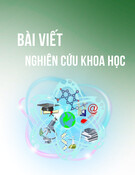

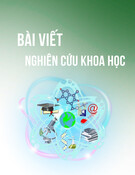

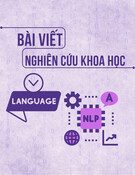




![Bộ câu hỏi trắc nghiệm Văn bản tiếng Việt [chuẩn nhất]](https://cdn.tailieu.vn/images/document/thumbnail/2025/20251127/thuynhung051106@gmail.com/135x160/24021764296609.jpg)


![Bài giảng Ngôn ngữ học đối chiếu Nguyễn Ngọc Chinh [PDF]](https://cdn.tailieu.vn/images/document/thumbnail/2025/20251101/vovu03/135x160/7471762139652.jpg)

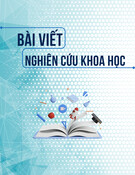
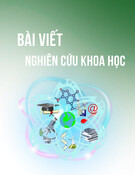




![Ngân hàng câu hỏi môn Tiếng Việt thực hành [chuẩn nhất]](https://cdn.tailieu.vn/images/document/thumbnail/2025/20251003/kimphuong1001/135x160/21861759464951.jpg)
![Bài giảng Văn học phương Tây và Mỹ Latinh [Tập hợp]](https://cdn.tailieu.vn/images/document/thumbnail/2025/20251003/kimphuong1001/135x160/31341759476045.jpg)

